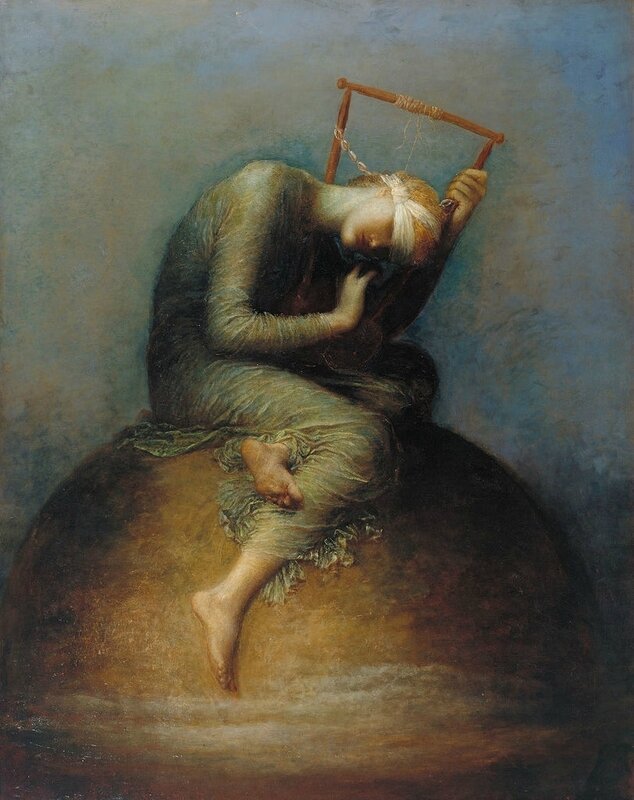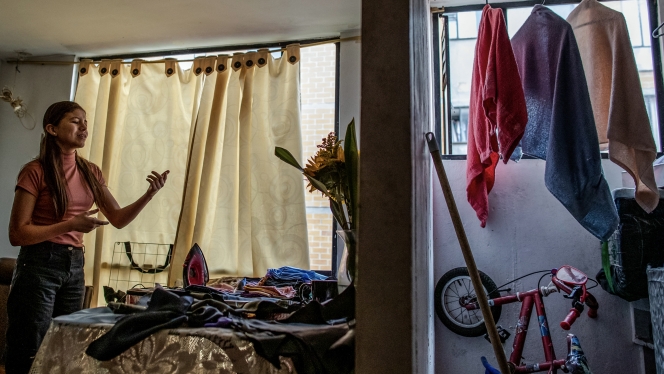![6]()
![2]()
![3]()
![6]()
![4]()
![5 (2)]()
Lot 108. A fine pair of Imperial spinach-green jade double-carved circular table screens, Qianlong-Jiaqing period. Estimate HK$600,000 - 800,000 (US$77,000 - 100,000). Sold for HK$ 1,312,500 (€150,607). Photo: Bonhams.
Well carved in high relief on both sides featuring lush steep mountainous landscapes with pine, cypress, wutong and plantain trees, lingzhi and shrubs, all amidst multi-layered rockwork and outcrops, with steps, streams and waterfalls, all below clouds; one screen carved to the front with Shoulao, the God of Longevity, standing in front of a pavilion above two young attendants carrying a hanging chime, qing, the reverse with a crane perched on rockwork and biting on a lingzhi; the second screen decorated with a scholar and two attendants carrying lotus stems below a pagoda, the reverse with a stag and doe grazing with one feeding on lingzhi, the stone of attractive darker and lighter spinach-green tones, wood stands and fitted box. Each 20.6cm (8 1/8in) diam. (5).
Published and Illustrated: Jade: Ch'ing Dynasty Treasures, Taipei, 1997, pp.66-69 and 272, no.20.
Exhibited: The Bowers Museum of Cultural Art, Santa Ana, California, Jade: Ch'ing Dynasty Treasures from the National Museum of History, Taiwan, 7 September 1997 - 1 March 1998
The Houston Museum of Natural Science, Houston, Texas, Jade: Ch'ing Dynasty Treasures from the National Museum of History, Taiwan, 3 April - 7 September 1998
National Geographic Society Museum Explorer Hall, Washington D.C., 8 October 1998 - 3 January 1999
Note: The exceptional table screens would have formed part of the paraphernalia on a scholar's desk, with the vast multi-layered mountainous landscape alluding to the idealised scholar's retreat. The auspicious subject matter conveys wishes of longevity, represented by the crane, deer and lingzhi, as well as the sage, who may be identified as Shoulao, the God of Longevity. Compare a related pair of white jade circular screens, Qing dynasty, from the Qing Court collection, carved on the front of each screen with a sage, possibly representing Shoulao, and attendants in a mountainous landscape, the reverse with a crane and deer, illustrated in The Complete Collection of Treasures of the Palace Museum: Jadeware (II), Shanghai, 2008, pl.61. The stag and doe symbolise the wish for marital bliss, and when combined with the lingzhi, could be interpreted to wish continuity and longevity. The musical stone carried by the attendants relates to the sets of jade chimes used in the Grand Sacrifices of state rituals performed at the Altar of Heaven and the Altar of Land and Grain, underpinning the legitimacy of the dynasty and establishing the emperor as the single intermediary between Heaven and Earth. The auspicious wishes of longevity and continuity represented in the present lot can be therefore construed not only as a personal wish to be bestowed on the owner of the screens but also on the dynasty.
The Qianlong emperor advocated that jade mountains and carved panels should carry the spirit of paintings by famous past masters. It is recorded that a number of classical paintings from the emperor's own collection was ordered to be reproduced in jade such as the well-known painting entitled Travellers in the Mountain, by the painter Guan Tong of the Five Dynasties (907-960 AD). In one of the emperor's poems, as discussed in an essay by Yang Boda, Arts of Asia, 'Jade: Emperor Ch'ien Lung's Collection in the Palace Museum, Peking', March-April 1992, the emperor noted in reference to a jade panel:
'This piece of precious jade slab is from Khotan. It is unsuitable for making vessels such as the dragon hu and animal Lei. In order to fully utilise it, it is carved into a panel with the scene of "A Riverside City on a Spring Morning". Imagination is exerted to turn the natural undulation or ruggedness into an appropriate landscape... It takes ten days to carve a tiny bit of water and five days to shape a piece of rock. The crafting is indeed very time-consuming.'
See a related spinach-green jade double-sided circular screen, Qianlong, decorated with Shoulao greeting Xiwangmu, the reverse similarly carved with a stag and doe, which was sold in these rooms, 4 December 2008, lot 204; compare also a pair of white jade circular screens, Qianlong, with related subject matter of sages, attendant striking a musical stone, and cranes, which was sold at Christie's Hong Kong, 27 November 2007, lot 1511.
![7]()
An Imperial spinach green jade 'tiger hunt' circular screen, Qianlong period. Sold for HK$ 5,780,000 (€663,247) at Bonhams Hong Kong, 4 December 2008, lot 204. Photo: Bonhams.
![8a40513d0f0941af8770001d948ad905]()
A magnificent pair of white jade circular screens, Qianlong period (1736-1795). Sold for HKD 18,247,500 (USD 2,355,770) at Christie's Hong Kong, 27 November 2007, lot 1511. © Christie's Images Ltd 2015
Bonhams. FINE CHINESE CERAMICS AND WORKS OF ART, 30 May 2017, 15:00 HKT - HONG KONG, ADMIRALTY



















































































